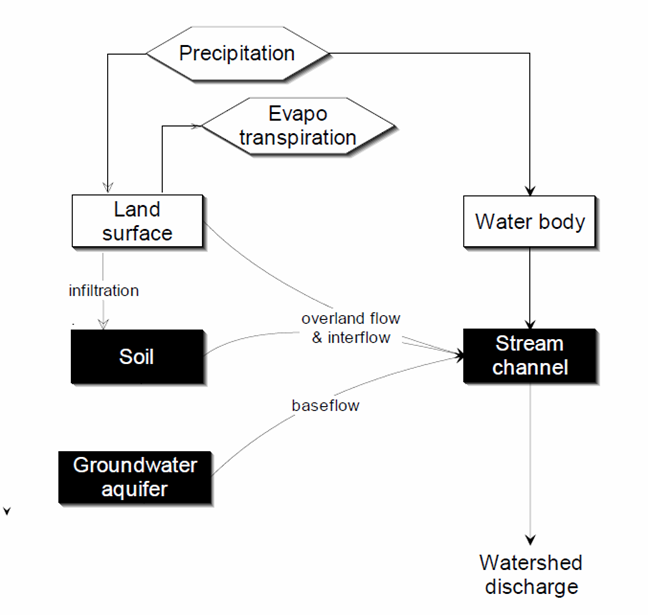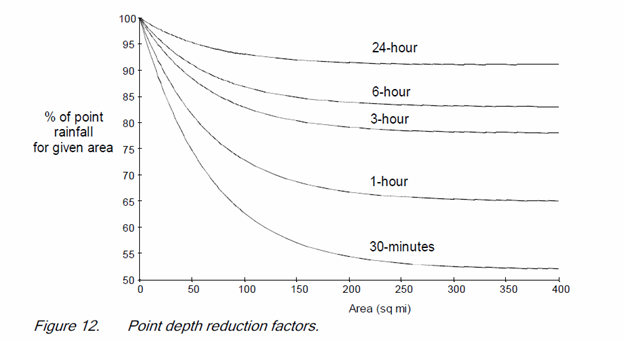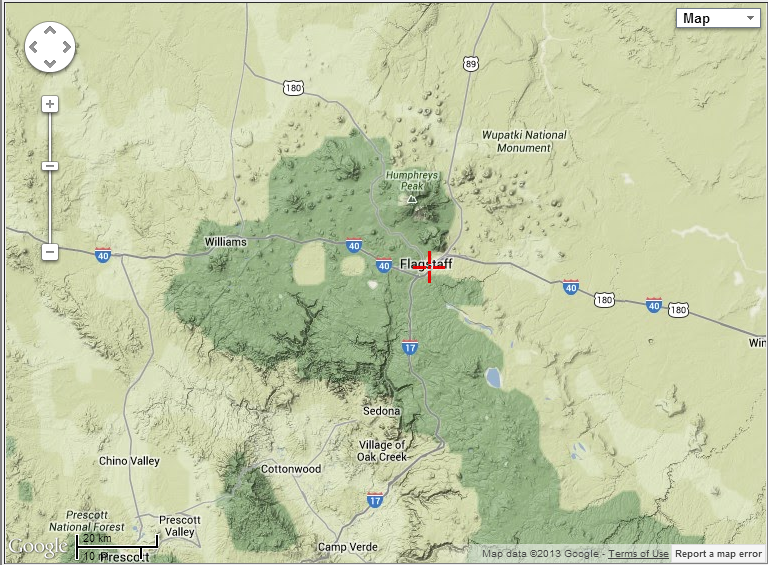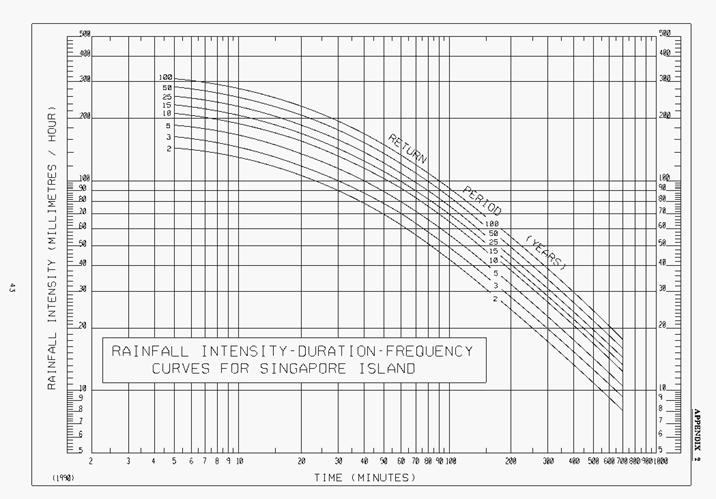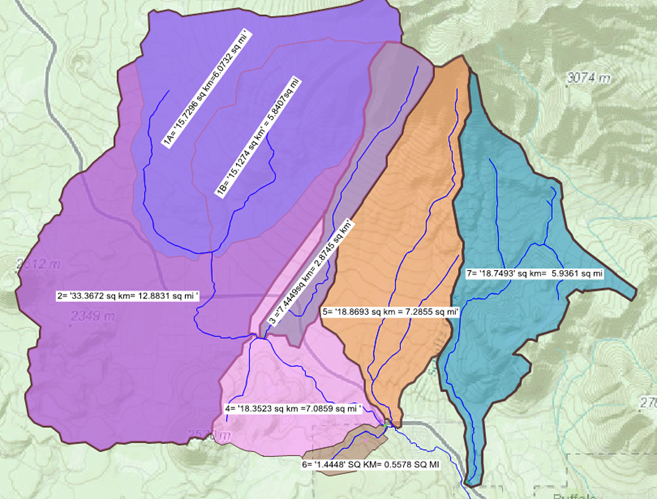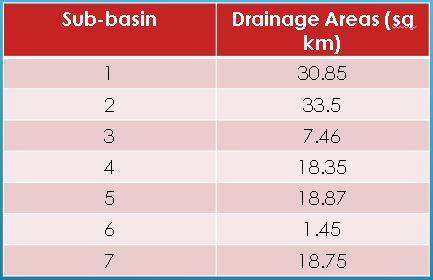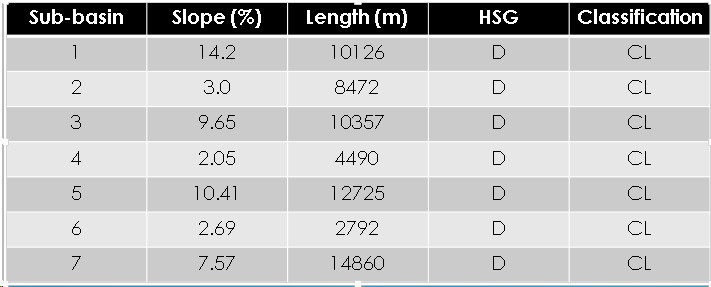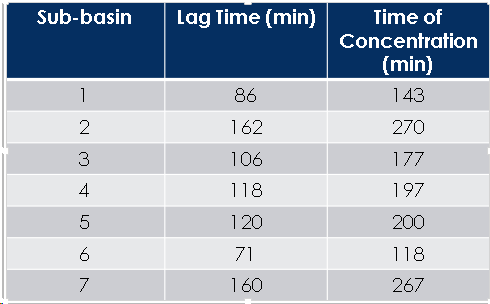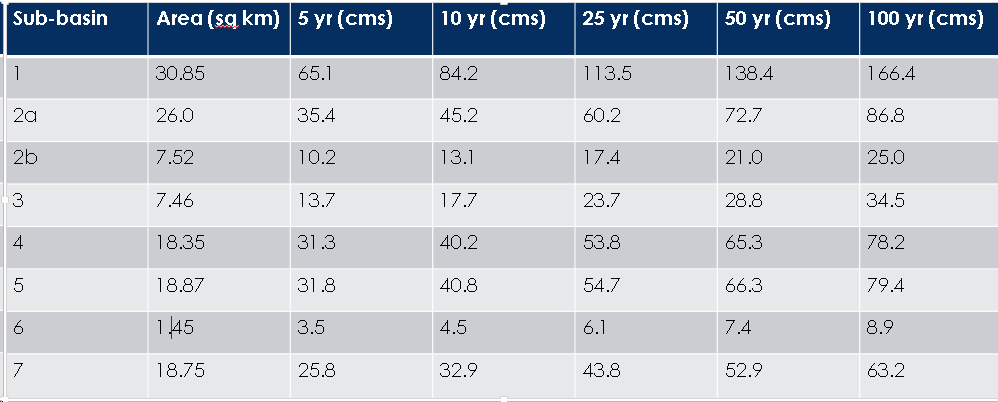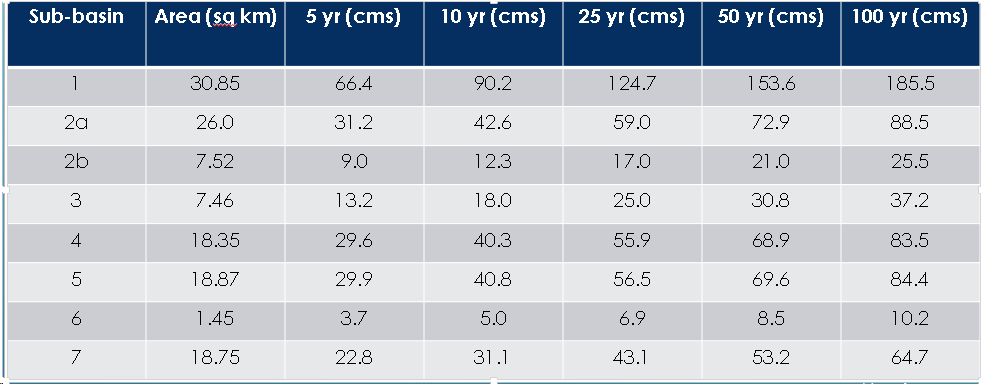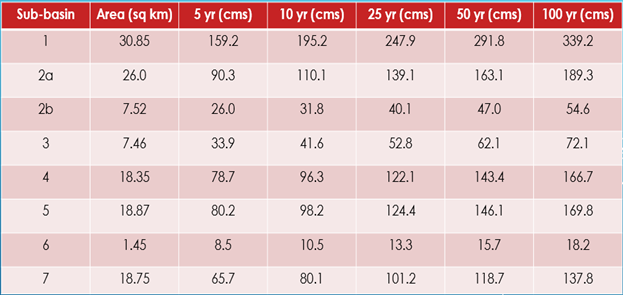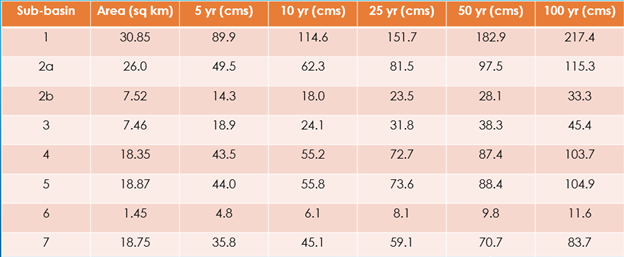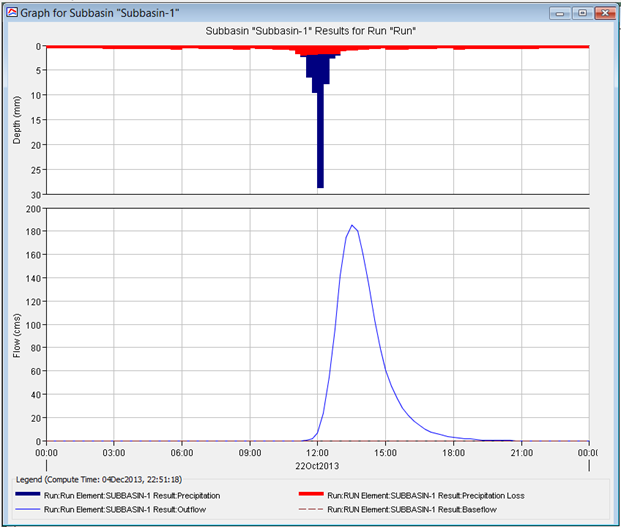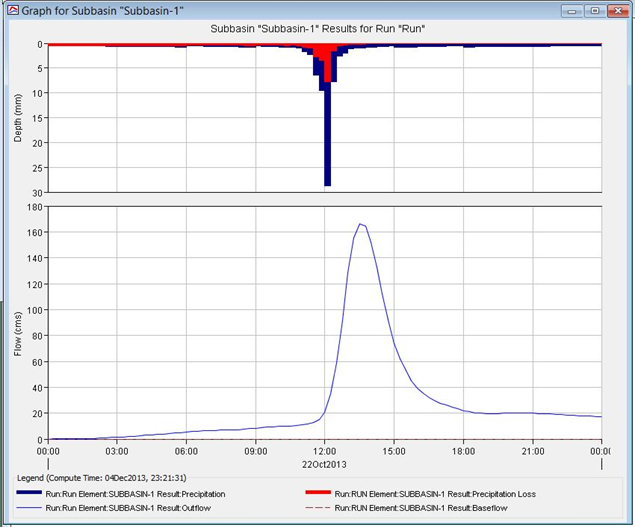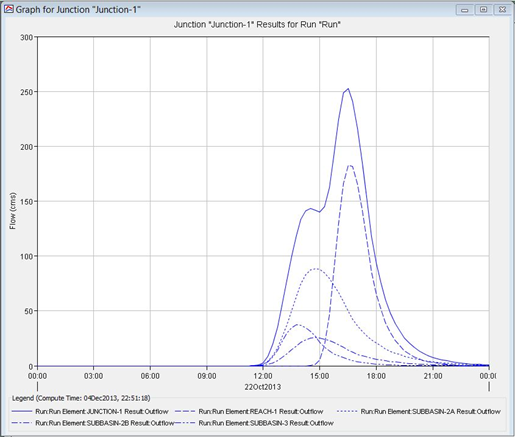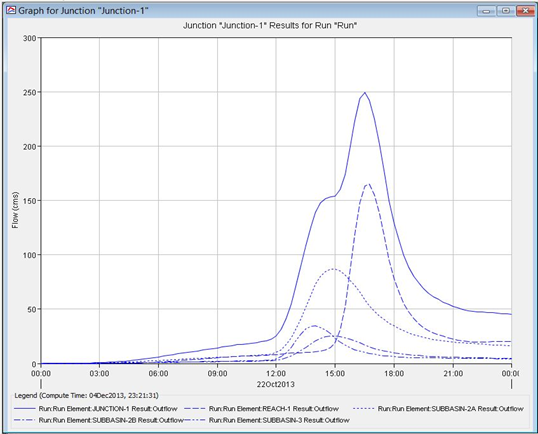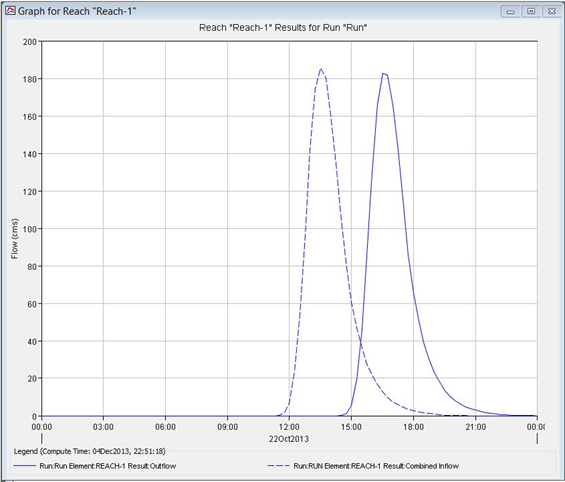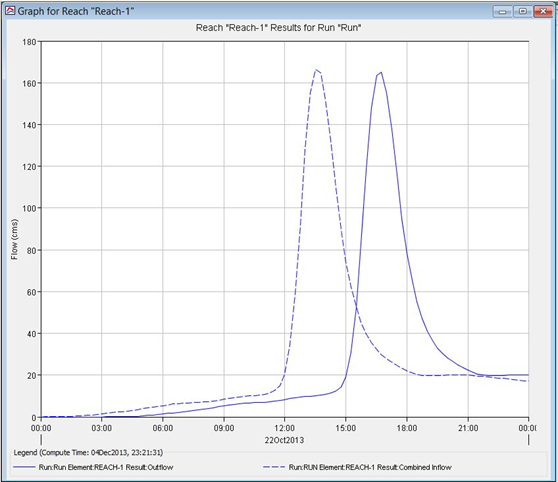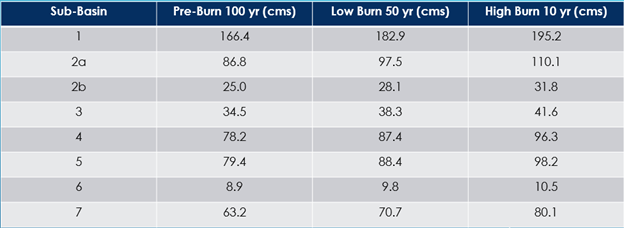HEC-HMS Model
1. Watershed Runoff Process
2. 24-hour Chosen
The storm duration for the rainfall input is dependent on the total watershed area and shall be 24 hours due to the watershed area is greater than 1.0 square mile. (Coconino County Drainage Design Criteria)
3. 100-year Storm
From NOAA:
Intensity-Duration-Frequency (IDF cruve)
4. HEC-HMS Method
Most watersheds in the Flagstaff area are ungaged, therefore, unit hydrograph and soil loss parameters should ne developed using the SCS dimensionless unit hydrograph and SCS curve number methodology. The SCS Type II rainfall distribution shall be used (Coconino County Drainage Design Criteria). And we will also do the Green and Ampt method.
5. Subbasin
6. Lag time
7. Results
a. Pre-Burn
Discharge results were found for both pre-burn and post-burn analysis of the watershed. Results for both the SCS Curve Number method and for the Green and Ampt method for the pre-burn ended up being close to each other which proved the modelling to be accurate. Immediate high burn and low burn results were found and with analyzing these results it is evident that if a fire were to occur on our watershed, flooding would occur and flood right into downtown Flagstaff. Tables below show the pre-burn analysis results that were found when modelling both the SCS Curve Number loss method as well as the Green and Ampt loss method.
Table R1.1 Pre-burn SCS Curve NumBER LOSS METHOD RESULTS
Table R1.2 Pre-burn Green and Ampt loss method results
b. Post-burn
After analyzing and modelling the pre-burn conditions or our watershed, we analyzed and modelled the immediate high post-burn conditions as well as the immediate low post-burn conditions. We did this by using the SCS Curve Number loss method. Tables below show the results found when modeling these conditions. For the immediate high post-burn conditions a CN of 95 was used, and for the immediate low post-burn condition a CN of 85 was used.
Table R1.3 Immediate high post-burn SCS Curve Number loss method results
Table R1.4 Immediate low post-burn SCS Curve Number loss method results
c. Sub-basin-1
Green and Ampt
SCS
b.Junction-1
Green and Ampt
SCS
c. Reach-1
Green and Ampt
SCS
8. The comparison of Pre-burn and Post-burn
After modelling the post-burn conditions of the watershed and looking at the results, it is evident that flooding would indeed occur. Table below shows the outcomes from the different conditions evaluated within the model for the 100 year frequency data.
100 year peak discharge comparison
As you can see the discharges increased significantly when modeling the post-burn conditions. The two pre-burn loss method results were similar. Table below depicts interesting comparison showing how the 10 year high post-burn modeling results are higher than the 100 year pre-burn modeling results.
Evaluation of pre/post runoff
This means that if a high burn high intensity fire were to occur on our watershed, then peak discharges would cause flooding into downtown Flagstaff. This is an important issue that needs to be addressed in order to prevent flooding. Methods include mechanical thinning of the Ponderosa Pines and mixed conifers in the area of study, as well as controlled burn fires. These methods would reduce fuel loading which in return would reduce the spread of fire, thus reducing the flood rates which would occur when a storm hits Flagstaff. Many homes, county property, and even lives would be at danger. After modeling and analyzing the outcomes, precautionary measures should be taken to avoid drastic flooding of Flagstaff.

